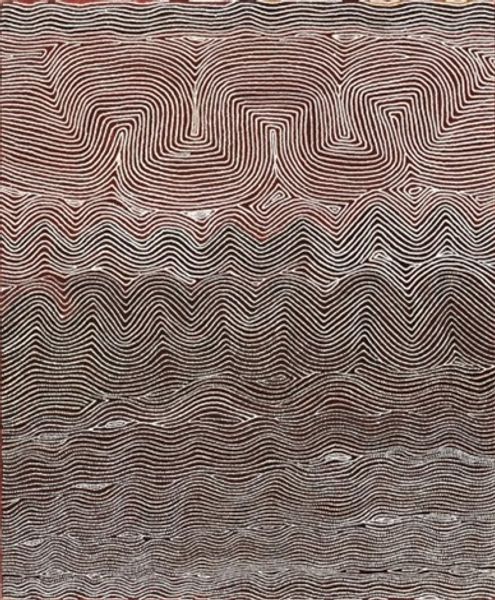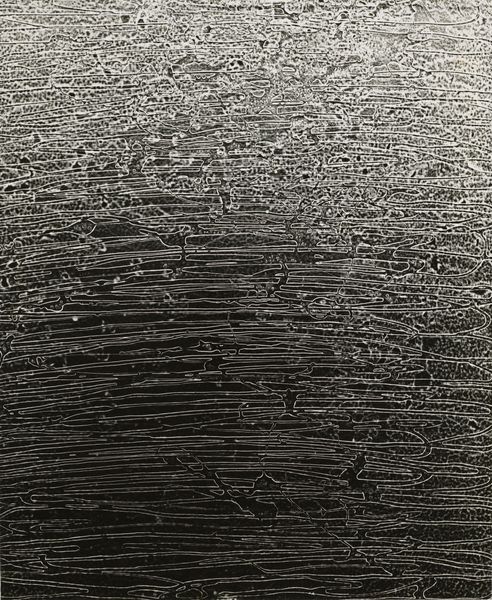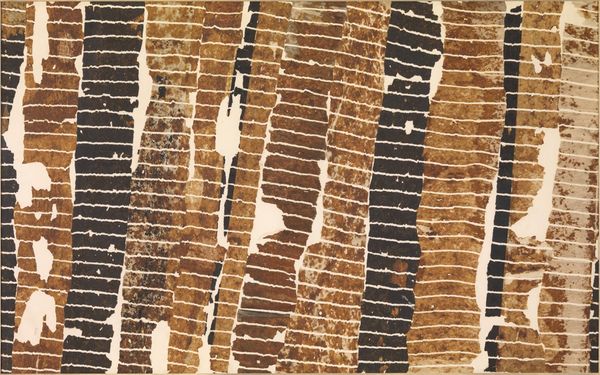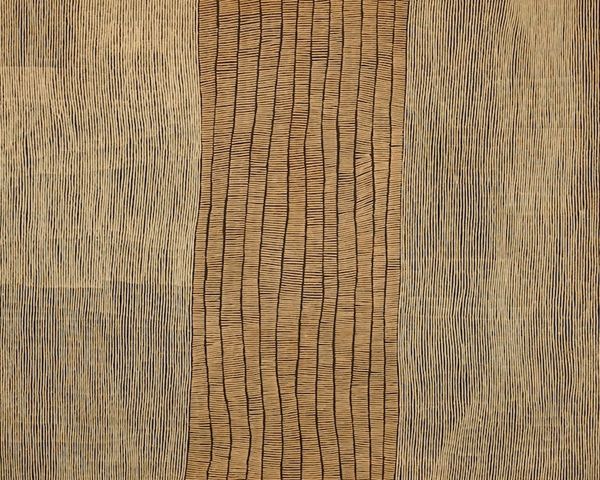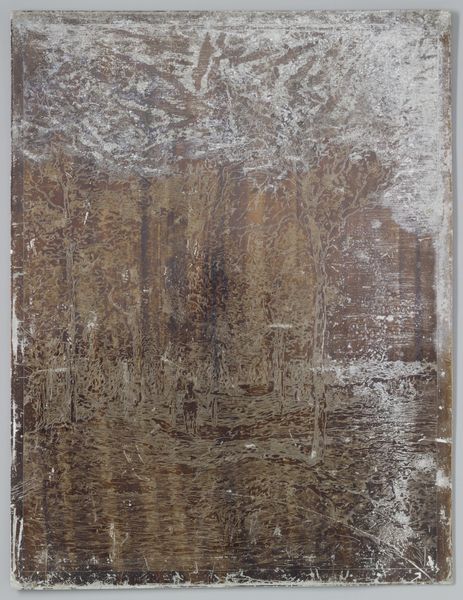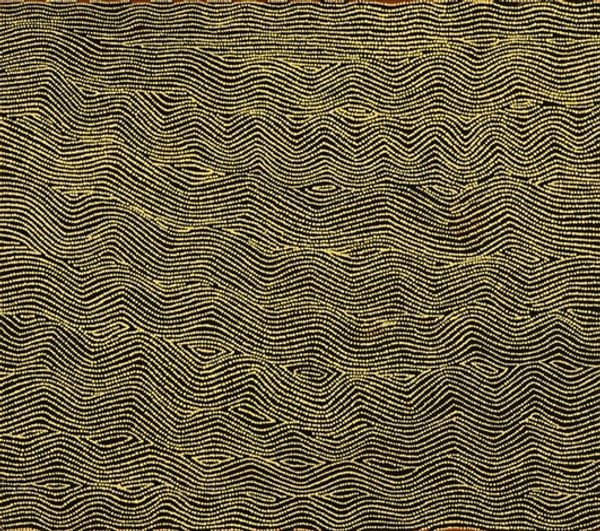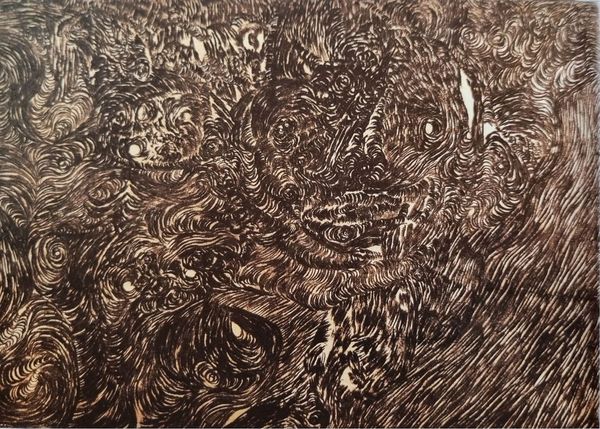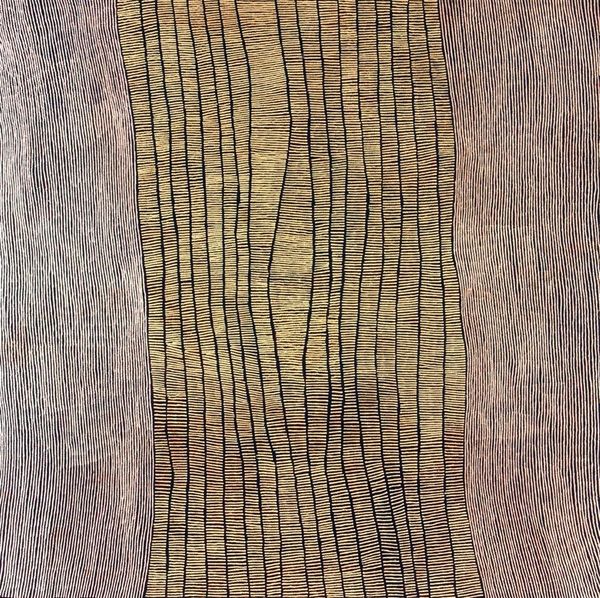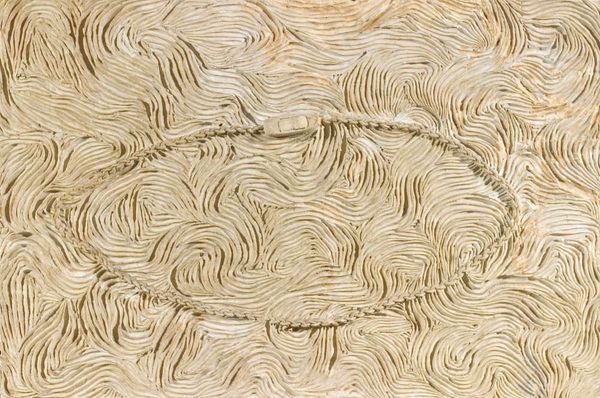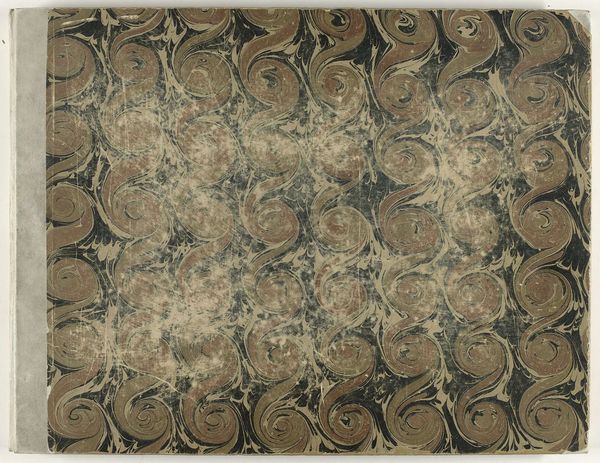
painting, acrylic-paint
#
natural stone pattern
#
rippled sketch texture
#
contemporary
#
wave pattern
#
painting
#
acrylic-paint
#
geometric pattern
#
subtle pattern
#
abstract pattern
#
organic pattern
#
geometric
#
geometric-abstraction
#
abstraction
#
intricate pattern
#
line
#
layered pattern
#
organic texture
Copyright: Warlimpirrnga Tjapaltjarri,Fair Use
Curator: This painting just pulses with movement, doesn't it? All those undulating lines. Editor: Indeed. We're looking at Warlimpirrnga Tjapaltjarri's 2002 acrylic on canvas, "Tingari Men Camped at Marawa, West of Lake Mackay". The overall effect of its geometric design feels intensely rhythmic, and almost hypnotic in its repetition. Curator: Hypnotic, yes! It's interesting how those repeating shapes—the circles and squares—break up what would otherwise be an overwhelming sense of continuous motion. I'm thinking about the labor involved in producing these lines. Each stroke, a deliberate act... What does this constant movement mean? Editor: The formal qualities guide us towards that understanding. The monochrome palette encourages focus on the compositional structure, right? Those tightly packed lines create a textured surface that vibrates. Think about how the varying thickness and density of the lines define space and form, guiding your eye through the artwork's narrative. Curator: I wonder about Tjapaltjarri's tools, and his own movements, what his relationship with the land and these specific sites—Marawa, Lake Mackay—would have been. Each concentric shape then is part of a history, his history and the history of the Tingari men. How did these available tools influence the making process and the image as we have it? What was his intention when using it and is that related to this formal feature? Editor: A material interrogation certainly enriches the experience. It's vital, however, to analyse first and foremost the image's inherent organization. See how those centered shapes disrupt the fluid linear structure and act as focal points. The semiotics of shape, repetition and monochrome colour amplify meaning and understanding, Curator: But without considering the production of the image—the societal factors in its making, the availability and application of materials like acrylic on canvas—don't we lose crucial context, reducing this artwork to simply a pattern? Isn't important to include every bit of context we can in the way we create meaning of a artwork? Editor: To divorce the visual structure from its inherent meaning, though, is to misunderstand its intended impact! Though process and materiality do affect the piece, the end goal still impacts how these components interact with each other. What that goal is in this artwork—which is only defined through close examination of what actually is presented—can never be reached by only observing external features like labor. Curator: I see the image differently now, appreciating its visual intensity alongside the layers of labor, culture, and geography embedded within it. Editor: Agreed. Perhaps by going back and forth, between material realities and structural organisation, we get closer to a holistic appreciation of works of art.
Comments
No comments
Be the first to comment and join the conversation on the ultimate creative platform.
